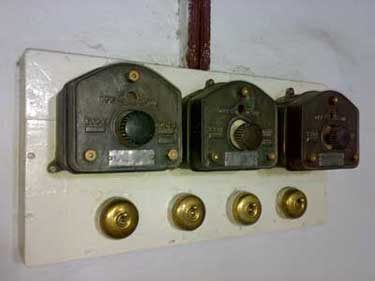
You flick the light switch and nothing happens. The coffeemaker, which was set on a timer to go off at 6 A.M., sits with pot of cold water on your kitchen counter. Before assuming that the devices are shot, follow this checklist:
- Confirm that the circuit has power and that the fuse hasn’t burned out or the circuit breaker tripped.
- Check to see if the appliance or fixture is working by checking light bulbs, cords, and plugs.
- Inspect the connections at the fixture and at the terminal screws to ensure they are tight.
- ❏ Check for a problem in the circuit itself.
- Turn the power off.
- Remove the cover plate from the device, and unscrew the device from the box.
- See if the terminal screws are tight and have good contact with the wires.
- If the device is back wired, there shouldn’t be any bare wire showing, only insulation.
- Check the wire nuts or taped-and-soldered connections to be sure they’re tight.

 Now that you know about switches and receptacles, it’s time to replace any that are broken or to upgrade existing ones. The most common upgrade is swapping a standard toggle switch for a dimmer. Newer, quieter models—that don’t have the resounding “click” of old switches—sometimes are installed in older homes that still have their original devices.
Now that you know about switches and receptacles, it’s time to replace any that are broken or to upgrade existing ones. The most common upgrade is swapping a standard toggle switch for a dimmer. Newer, quieter models—that don’t have the resounding “click” of old switches—sometimes are installed in older homes that still have their original devices.


